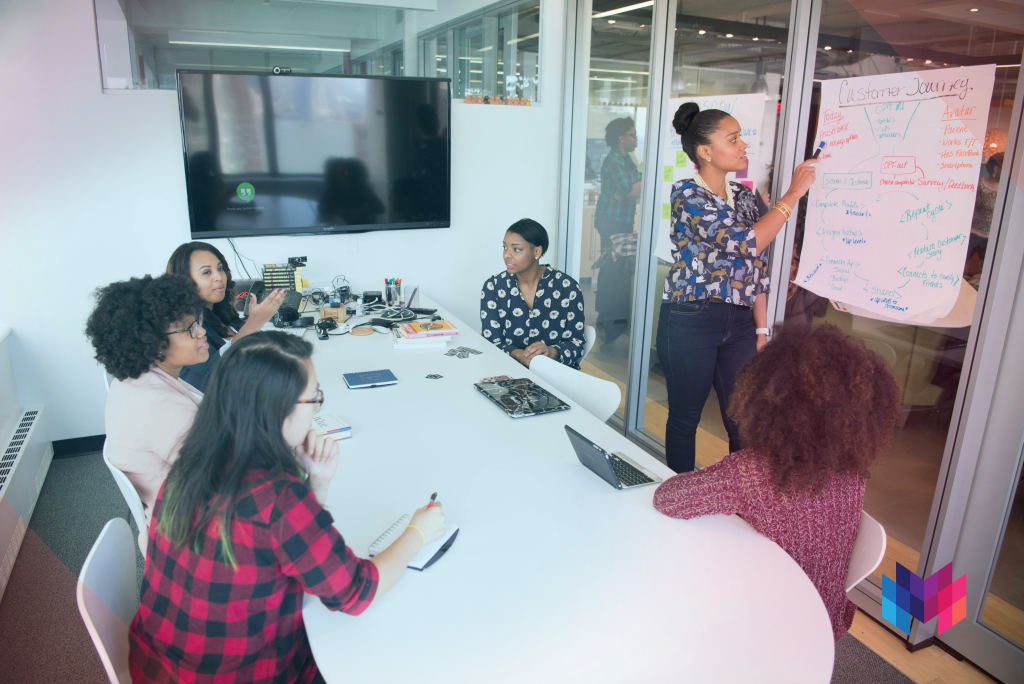Call it collaborative learning, crowd-sourced learning, or peer-to-peer learning; when students learn through interaction with each other, it creates one of the most powerful learning methodologies in the world.
In today’s blog, we take a close look at how peer-to-peer learning works, how it benefits learners, and offer some practical ways to apply it.
What is peer-to-peer learning?
Simply put, in peer-to-peer learning, students learn from one another. It’s a collaborative approach where individuals with similar knowledge or experience work together to achieve a common goal. The value of peer-to-peer learning has been recognised far back in time by the likes of Socrates, who believed in giving students ownership in what they are learning, and in the 1960s by Russian educational psychologist Lev Vygotsky who argued that the range of skills that can be developed with peer collaboration is greater than anything that can be attained alone.
Fast forward to the 21st century, and as even large universities ventured into offering classes online, students started to miss out on traditional social learning opportunities, such as group work, pairs working in laboratories, and library huddles. The challenge of the modern day has been to harness technology to create peer-to-peer learning opportunities online.
One of the simplest platforms, and maybe one of the first, is the messaging app WhatsApp, where groups of students would come together to offer solutions, questions and opinions around a study topic. It’s not ideal, though, as you’d want discussions and this form of social learning to happen within a semi-supervised environment and as close as possible to the course content.
Benefits of peer-to-peer learning
Collaborative learning helps bridge the gap between online learning and in-person learning. Aside from bringing students together and engaging them in training remotely, peer-to-peer learning breaks down information silos, boosts course completion rates and lowers training costs. It also has distinct benefits for the learner, such as fostering better oral communication, self-management and leadership skills. Here are some other compelling benefits:
Develop critical thinking skills
Studies have shown that peer-to-peer learning promotes independent and higher-level thinking and gives students ownership of what they are learning. Higher-level, aka critical thinking skills, are developed when students ask questions, challenge assumptions, analyse information, and discuss, debate and evaluate content through their own thinking and the thinking of those around them. It helps them move beyond remembering and recalling information into application, analysis, synthesis, evaluation, and creation.
Increased engagement
Peer-to-peer learning encourages active participation and engagement, which can help learners stay motivated and focused on their studies. Engaged students see better learning outcomes, including academic success, improved social-emotional well-being, and superior connections with their lecturers and peers.
Enhanced understanding
Unlike rote learning, where learners unquestioningly absorb the content and memorise information based on repetition, students engaged in peer-to-peer learning deduct viable conclusions collectively and independently from their instructors. Students learn better, gain a deeper understanding of the material, retain information better, and are able to apply it in real-life situations.
Greater social interaction
Peer-to-peer learning provides opportunities for learners to build relationships and form connections with their peers, which can be beneficial for their personal and professional development. During peer learning, students encourage each other and build an environment of trust, which builds morale and promotes a sense of community.
Increased confidence
Peer-to-peer learning can help learners build confidence in their abilities and knowledge by allowing them to demonstrate their understanding of a subject to their peers without being judged. With peer learning, classes are split into smaller groups that help students overcome their social anxieties and encourage them to participate in discussions more.
10 Tips for maximising peer-to-peer learning opportunities
Depending on the type of course and collaboration tools at hand, there are some things you should keep in mind to ensure peer-to-peer learning is constructive.
- Plan peer learning activities to ensure they work to deepen the understanding of different course modules.
- Introduce peer learning opportunities during course onboarding to set clear student expectations.
- Provide clear instructions and requirements to use collaborative tools.
- Establish ground rules for participation and contributions.
- Monitor students’ discussions to guide off-topic conversations, answer questions, and provide feedback.
- Keep the groups small to maintain social cohesion and group peers who are close in experience or stage of training.
- Incorporate self-assessment and peer assessment for group members to evaluate their own and others’ contributions and allow students to share reflections on their learning.
- Schedule instructor feedback to reduce discrepancies between students’ current understanding and what they are expected to achieve.
- Place a high-ability student within each group to improve group performance.
- Set up course hashtags that students can use to connect, share materials or exchange ideas.
With tech innovation, peer-to-peer learning can happen in a variety of forms and on myriad digital platforms. Here are some examples of tech-enabled peer-to-peer learning opportunities:
- Collaborative digital projects
- Online communities
- Group study sessions
- Discussion forums
- Discussion seminars
- Peer tutoring programmes
- Collaborative whiteboards
- Breakout rooms
- Private study groups
- Peer-assessment tasks
- Collaborative project work
- Team workspaces
- Collaborative digital bookmarking platforms
- Interactive assignments, games, and quizzes
Mostly, the tools used to enable peer-to-peer learning will be built into an educational institute’s Learning Management System (LMS), either proprietary or through integrated third-party apps.
Benefit from peer-to-peer learning with MasterStart’s online courses
We work in teams, so why wouldn’t we learn as a team? MasterStart’s collaborative learning approach ensures students shift from passive receivers of information to active participants sharing knowledge with their peers.
Browse our online short courses and give us a call when you’re ready to upskill your employees with ready-made courses, unlock their potential, and watch them excel at work.


